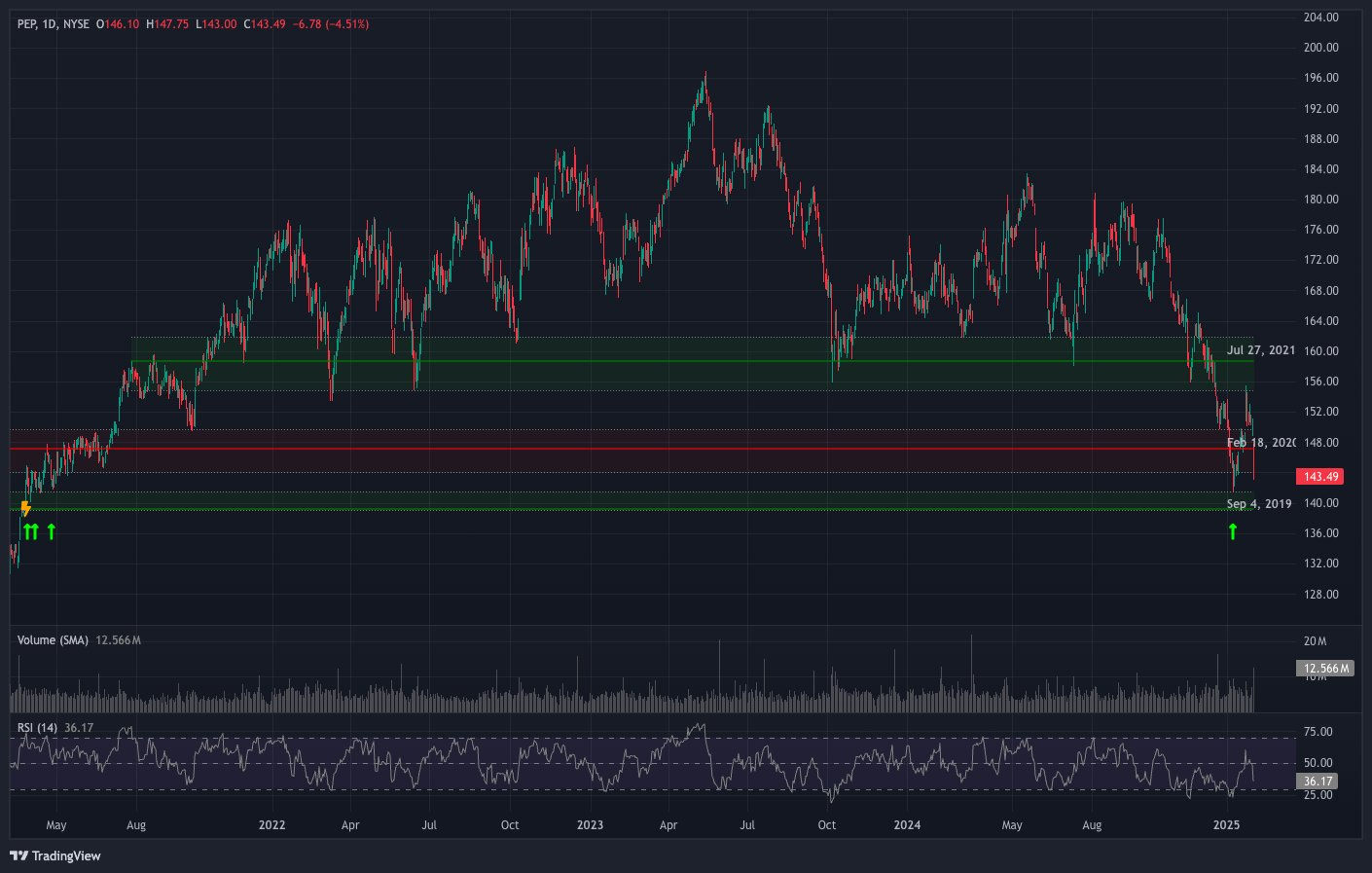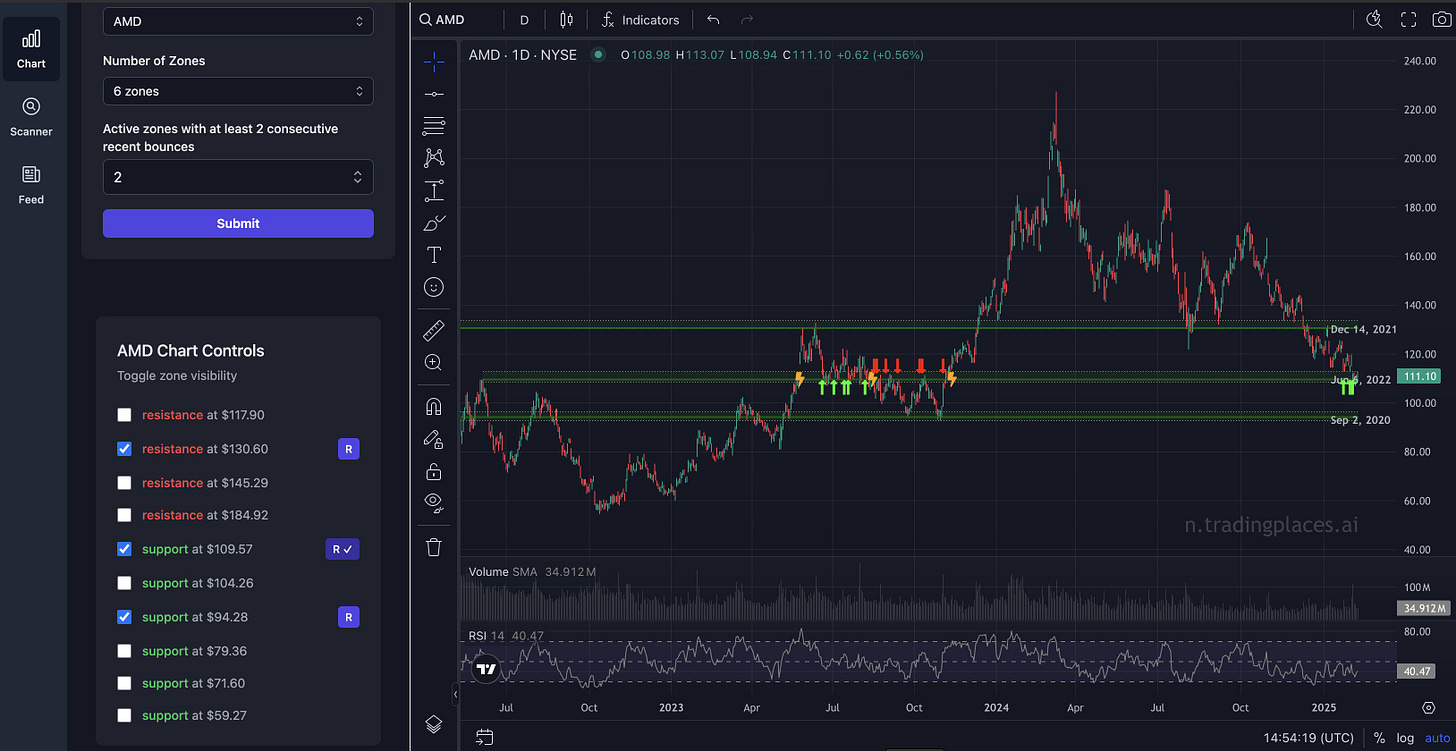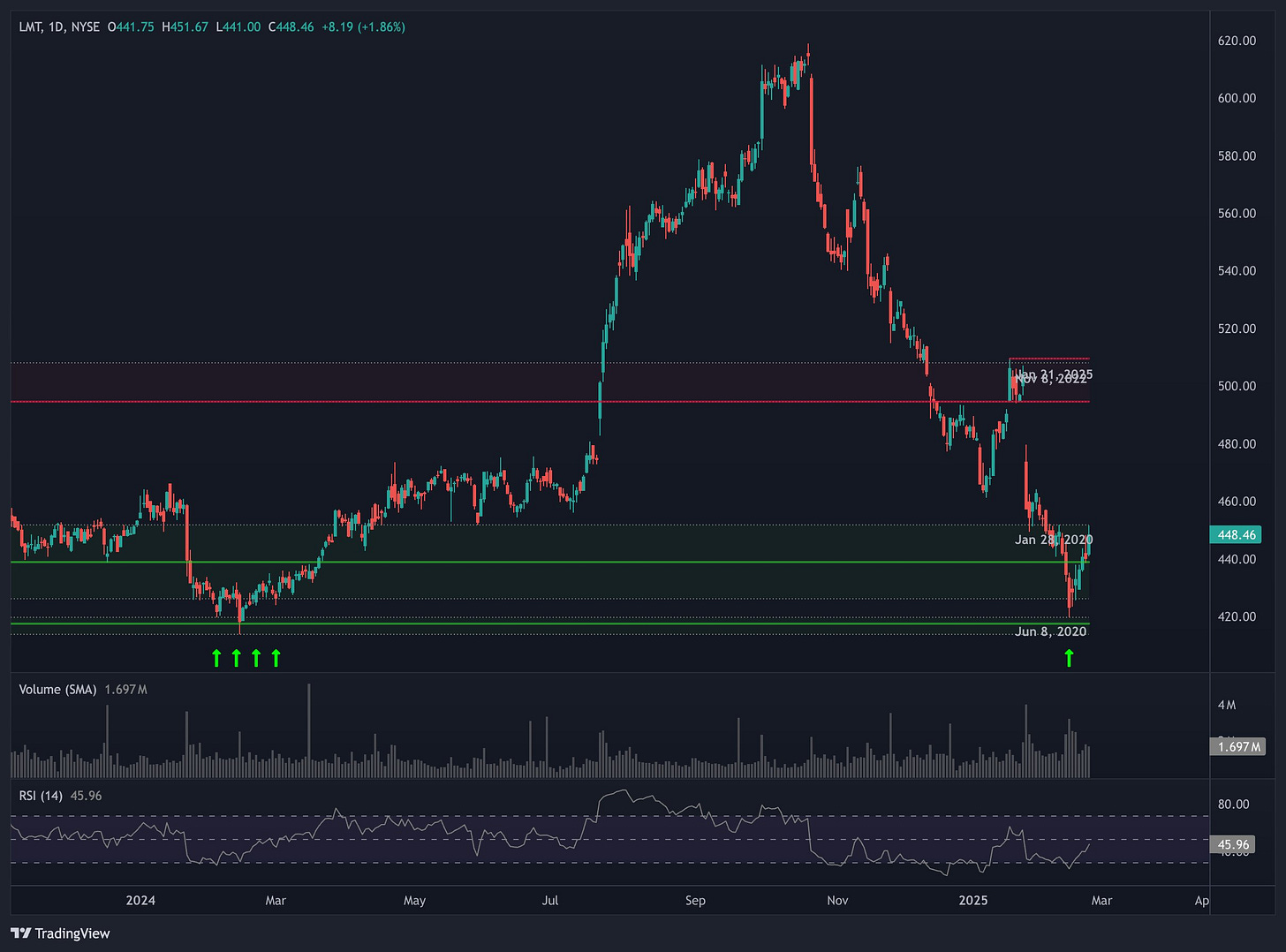Recapping past zones (April 11 2025)
A follow-up to our weekly zone alerts
GM y’all,
Thanks for joining us for another issue of Zone Update—our weekly retrospective on past alerts (some fresh, some a little older) where we try to analyze and learn from how price action was affected by an interaction with a key zone.
For the most part, zones are pretty insulated from headlines. They only care about a price level’s historical significance and how the market reacts to it.
So despite some of the weird-ish macro events of the past 3-4 months… our setups have performed pretty well.
But man… calling these past few days a “rollercoaster” would be a huge understatement.
The up-and-down movements the market’s been on lately has been a little too erratic for our zones to keep up with.
So this week—while we wait for a little more clarity and for things to slow the hell down—we’re going to revisit zone alerts from a little further back… before we started living in a Black Mirror episode.
Ah, simpler times…
In case you’re new here, each week we highlight stocks nearing or entering Hot Zones, i.e. key levels on the charts with great risk-reward setups. Stay tuned and subscribe to get these alerts before anyone else!
Check out this week’s hot zones:
PepsiCo Inc. (PEP)
Consumer Defensive • Beverages - Non-Alcoholic • USA • NASD
Zone alert: February 5, 2025
“$PEP could be interesting if the Sept 2019 zone holds 👀”
For most of 2024, PEP bounced around the $156-180 range, trading between its July 2021 and August 2022 zones. But after a sharp breakdown in mid-December, it quickly found itself sitting on a new support—the September 2019 zone.
Despite being untested since 2021, this zone held firm against its last retest. And it proved it again during this most recent attempt.
It quickly thwarted PEP’s downward momentum, leading to a 9+% rally to the July 2021 zone.
To us, it looked like the stock had found a new channel to consolidate in.
So when price dipped back into the low $140s, we said another rebound from support could be on the way.
It took a couple of weeks… but sure enough, it happened.
Also, zoom in a little closer on the chart, and you’ll see that those two bounces? They started almost immediately after price very lightly kissed the top of the zone.
PEP went up by another 9+% after the bounce confirmation.
Side note: it’s now back at that same September 2019 support. But with the trade war with China still raging, it’s anyone’s guess what could happen here…
Advanced Micro Devices Inc. (AMD)
Technology • Semiconductors • USA • NASD
Zone alert: February 12, 2025
“Still looks to be on shaky ground. Might test the Sept 2020 zone before something fun happens”
If it feels like we’ve been mentioning AMD a lot, it’s probably because we have. AMD’s ripe for zone trades after all.
We last covered it in our March 21 recap. And if you’ve read that, then you already know how this went. This is pretty much just the prequel—the short before the long.
When our scanner flagged AMD, it was at its June 2022 zone. It was a zone that, in 2023 alone, was easily penetrated multiple times.
So we didn’t really have a lot of confidence in its strength.
Our estimate was that the zone would break, and the stock would drop down to the September 2020 zone—which had a higher probability of holding.
After a weak attempt at a bounce, that’s exactly what happened—the stock broke down, reaching the lower support zone shortly after.
A short position opened from that bonus alert would’ve netted as much as 15%.
Lockheed Martin Corp. (LMT)
Industrials • Aerospace & Defense • USA • NYSE
Zone alert: February 26, 2025
“💪🏻”
This bonus alert—albeit a bit delayed—did not need a lot of words.
LMT had just gapped down hard in late January, followed by a steep slide.
But that slide came with declining volume—sellers stopped showing up.
So when price cleanly tagged the strong June 2020 zone and gave us a pretty convincing bounce confirmation a couple days later, we knew the move was legit.
Yes, the alert was three days late… and yes, that meant missing out on the first 3.5% of the move…
But the rally that followed was strong enough to close the gap—and offered a shot at 10%+ gains for anyone who caught the rest of the ride up to the November 2022 zone.
—
So yeah, late entries suck.
But don’t worry. Soon, you wouldn’t have to rely solely on our (sometimes late) alerts to find solid setups—
the Trading Places online platform is launching in beta next week!
If you haven’t yet, make sure you’re subscribed so you don’t miss your invite.
We’ll see you back here soon!
WTF are Zones, anyway?
Zones are key price levels where the market has reacted strongly in the past—such as sharp reversals or sudden swings.
They’re areas where actual supply and demand met in the past, and likely will meet again.
“Why are these significant?”
Well, it all comes down to three key principles. We like to call them The Principles of:
When I Dip, You Dip, We Dip (aka psychology)
Traders are aware that others are watching these levels (zones) too. With everybody paying attention, this creates a self-fulfilling prophecy where everybody acts in anticipation of everybody else’s actions.
Markets Gonna Market ¯\_(ツ)_/¯ (aka technical factors)
If the first price rejection at the top of a zone was violent, it’s likely that buyers who entered at that level are now holding losses.
But with each retest, the rejection weakens, as there are fewer buyers remaining underwater. This weakens that resistance (or support for all you short-sellers), and could eventually lead to a break through.
Killer Whales (aka institutional plays)
Big players need liquidity in order to place massive orders without moving the market against themselves. So they wait for these zones, knowing a lot of us small fry (retail traders) will come to play.
This allows them to buy low or sell high without causing a lot of waves.
But remember: Zones are NOT guarantees but rather regions of increased probability for market moves. So always, ALWAYS use proper risk management.
Trading Places: Launch coming VERY soon!
Stop obsessively refreshing your charts like it’s your ex’s Instagram.
By combining historical patterns with real-time market data, Trading Places identifies zones and assigns probabilities to each one—helping traders spot potential plays with higher chances of success.
It automates all of the curation, chart-plotting, and alerting for you, so you can actually have a life (or at least pretend to)!
Stay tuned!
Disclaimer: This isn't financial advice. This shouldn’t be news to you.











